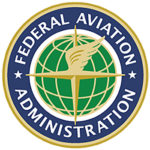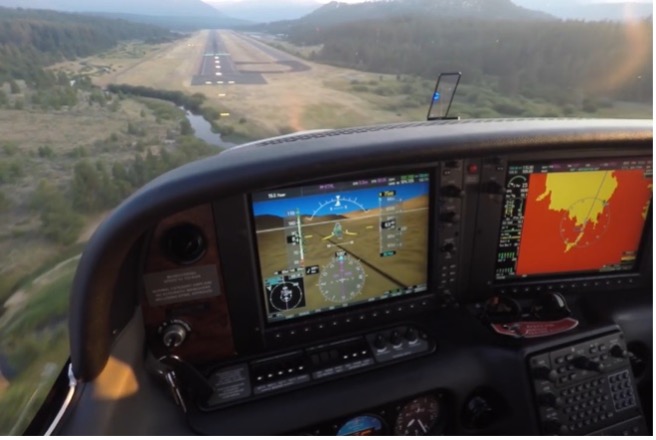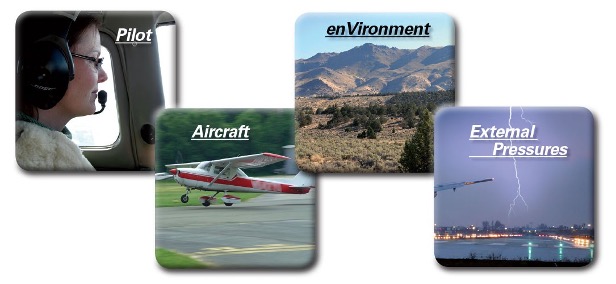Controlled Flight Into Terrain
 FAA Aviation Safety
FAA Aviation Safety
General Aviation Joint Steering Committee
Safety Enhancement Topic
Technological advances have improved pilot situational awareness and have dramatically reduced the number of general aviation (GA) controlled flight into terrain (CFIT) accidents over the past 20 years. Nevertheless, CFIT accidents continue to occur and at least half of them are fatal. This information will help acquaint readers with the precursors of CFIT accidents and highlight some technological and safety risk management solutions.
What is CFIT?
CFIT is defined as an unintentional collision with terrain (the ground, a mountain, a body of water, or an obstacle) while an aircraft is under positive control. Most often, the pilot or crew is unaware of the looming disaster until it is too late. CFIT most commonly occurs in the approach or landing phase of flight.
Accidents where the aircraft is out of control at the point of impact are not known as CFIT. Rather, they are considered uncontrolled flight into terrain. Similarly, incidents resulting from deliberate acts, such as terrorism or suicide by the pilot, are also not considered to be CFIT.
In a typical year, there are about 40 CFIT accidents, about half of which are fatal.
Pop Quiz: CFIT accidents occur primarily at night. True or False?
Surprisingly, the answer is false. It’s logical to think that CFIT accidents usually involve inexperienced pilots in dark night and/or instrument meteorological conditions. Or you might suppose that most arise from the painful pattern of what accident reports describe as “continued VFR flight into IMC.” However, the General Aviation Joint Steering Committee (GAJSC) observed that a clear majority of the CFIT accidents in a typical year occur in daylight, and with visual conditions.

Why Does it Happen?
So how does CFIT happen? How could anyone continue controlled flight into terrain that you can easily see and avoid? One major factor is the loss of situational awareness — failing to know at all times what the aircraft’s position is, how that position relates to the altitude of the surface immediately below and ahead, and how both relate to the course being flown.
Another big factor in CFIT accidents is wire strikes. You might think most wire strikes are confined to agricultural flying, but more than half do not involve this type of operation. Accident data also shows that wire strikes often occur below 200 feet above ground level. If you’ve got to fly low, give yourself some room. A little extra altitude — even 500 feet — will keep you above 90-percent of the wires.
Other top causes of CFIT are IFR procedural mistakes (e.g., flight below minimum enroute altitude or descent below minimum descent altitude) and unrealistic aircraft performance expectations (e.g., high density altitude, tailwinds on approach). To avoid these pitfalls, make sure you’re in compliance with all aspects of the clearances you accept and the procedures you fly. Equally important is to thoroughly research the environment you plan to operate in, especially at high altitudes and/or with short or obstructed runways.
How Can I Avoid CFIT?
Safety Risk Management (SRM) is a vital part of warding off a possible CFIT accident. It involves knowing what you’re getting into and understanding what capabilities and resources you have that will ensure a flight is completed safely. This starts at preflight. Make use of a Flight Risk Assessment Tool (FRAT) and the PAVE acronym (Pilot, Aircraft, EnVironment, and External Pressures) to help you build a personalized risk assessment before a flight.

During flight, you also need to stay vigilant to any changing conditions, like deteriorating weather, fuel status, and the onset of fatigue. Be ready and willing to adjust your plans. Don’t let Plan Continuation Bias (aka Get-there-itis) or external pressure lure you into making a poor decision. Having a Plan B at the ready can make a route change much easier to rationalize and accept.
There are a host of technological programs, applications, and devices that can aid pilots in situational awareness and risk assessment (e.g., moving maps with terrain overlays). In fact, pilots have access to more information than ever before and that has already contributed to a 20-year reduction in CFIT accidents. But all that information comes in many different forms so pilots must be thoroughly familiar with and proficient in device operation and information interpretation. Technology can also lead to unwanted distractions so remember to always Fly the Aircraft First!
Watch Controlled Flight Into Terrain in 57 Seconds
Tips and Best Practices
Keep your skills sharp between flights by flying simulators or flight training devices. Many feature realistic graphics so you can get a look at unfamiliar destination environments. And you can practice instrument procedures before you have to fly them for real. But remember, simulation is not adequate preparation for flights to unfamiliar and/or challenging environments. Therefore you should also make it part of your plan to get regular proficiency training with a flight instructor. Of course we recommend FAA WINGS Pilot Proficiency Training, but no matter what program or instructor you choose, try to include scenario-based training.
Finally, be sure to give yourself some breathing room. That means at least a mile from airspace and 2,000 feet vertically from terrain you’re trying to avoid. And since weather is very dynamic, you may consider even greater clearance distances to avoid any unexpected IMC.
Watch Controlled Flight Into Terrain: What more can we do?”
Reprinted with permission from FAA Safety Briefing magazine. Visit the Flight Safety Briefing website: https://www.faa.gov/news/safety_briefing



